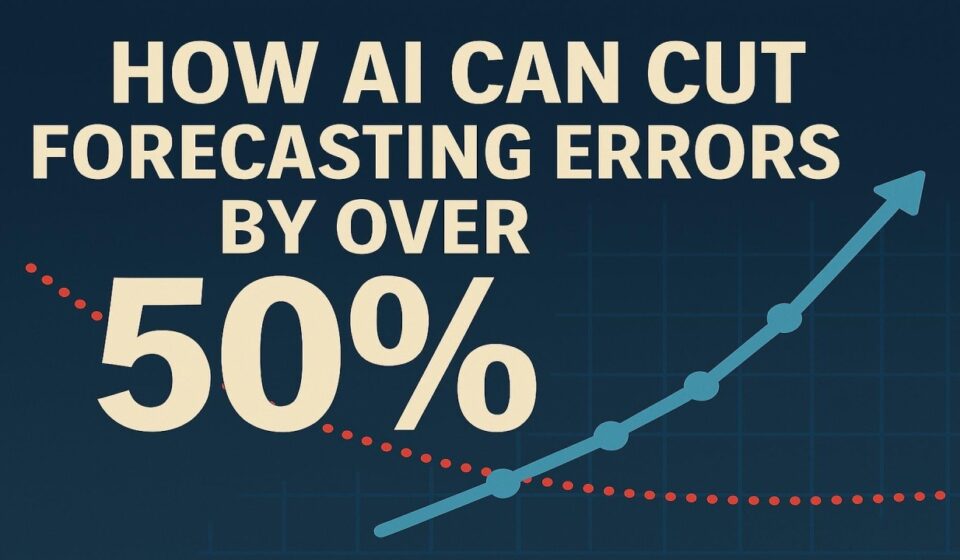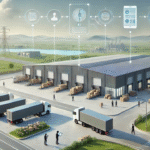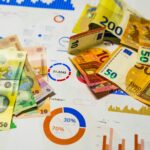
How AI Can Cut Forecasting Errors by Over 50%
Unlocking Precision, Agility, and Resilience in Modern Supply Chains
In today’s volatile and interconnected world, demand forecasting is both more critical and more complex than ever. Traditional forecasting methods—often based on historical averages, spreadsheets, and siloed systems—struggle to keep up with fast-changing consumer behavior, global disruptions, and multi-channel dynamics.
But there’s a game-changer quietly transforming how forward-thinking companies operate: AI-powered demand forecasting.
💡 Why Traditional Forecasting Fails
Let’s face it—most forecasting approaches assume that tomorrow looks like yesterday. They:
- Over-rely on historical sales
- Ignore external signals (like weather, social trends, competitor activity)
- Can’t adapt to seasonality shifts or supply chain shocks
- Are often updated manually, infrequently, and with limited visibility
The result? High forecasting errors, stockouts, overstocking, wasted working capital, and missed revenue.
🚀 How AI Slashes Forecasting Errors
AI flips this model. Instead of looking back, it learns from patterns and signals to look ahead—with more precision and speed. Here’s how:
1. Multi-Variable Demand Sensing
AI models integrate dozens—sometimes hundreds—of data sources:
- POS data, warehouse flows, ERP systems
- Weather, promotions, events, macroeconomic trends
- Even social media sentiment and search trends
This allows for real-time, hyperlocal demand sensing that catches early shifts.
2. Dynamic, Self-Learning Models
Machine learning models are trained on historical data but continue learning as new data arrives. This means:
- Forecasts improve over time
- Seasonality, promotions, and anomalies are dynamically handled
- You don’t need to “rebuild” models every cycle
3. Granular Forecasting (SKU x Location x Channel)
Unlike spreadsheet models that generalize, AI enables:
- Forecasting at SKU level per store/warehouse
- Aggregation across channels (eCommerce vs retail vs B2B)
- Clearer visibility into micro-trends that drive macro results
4. Simulation & Scenario Planning
AI allows you to ask “what if?” before making a decision:
- What if fuel prices spike?
- What if supplier lead time increases by 7 days?
- What if we move the promotion by 1 week?
This unlocks agile planning—a must-have in today’s supply chains.
📊 Real-World Impact
Leading companies using AI-based forecasting report:
- 30-60% reduction in forecasting errors
- Up to 40% reduction in stockouts
- 20% lower inventory holding costs
- 5-10% increase in revenue due to better availability
For example: A global CPG brand integrated AI forecasting across their top 5 markets and saw a 54% improvement in forecast accuracy within the first 6 months. The AI model picked up early signs of demand surge due to a viral TikTok trend—something their traditional system completely missed.
🧠 What You Need to Get Started
Deploying AI forecasting doesn’t mean overhauling everything. Start with:
- A clear problem scope (e.g., forecast 100 key SKUs across 10 regions)
- Clean, structured data (sales, inventory, and external signals)
- A strong AI partner or internal data science team
- A change-ready mindset—AI augments your planners, not replaces them
🌍 Final Thought: From Reactive to Predictive
AI-based forecasting is no longer a luxury—it’s becoming a necessity for survival and growth.
In a world of uncertainty, AI offers clarity, confidence, and control. And when implemented right, it doesn’t just reduce errors—it empowers better decisions across procurement, inventory, sales, and logistics.





